Haunted by ancient scriptures, demonic spirits in the Bible reveal complex roles that challenge the divine—discover their mysterious influence.
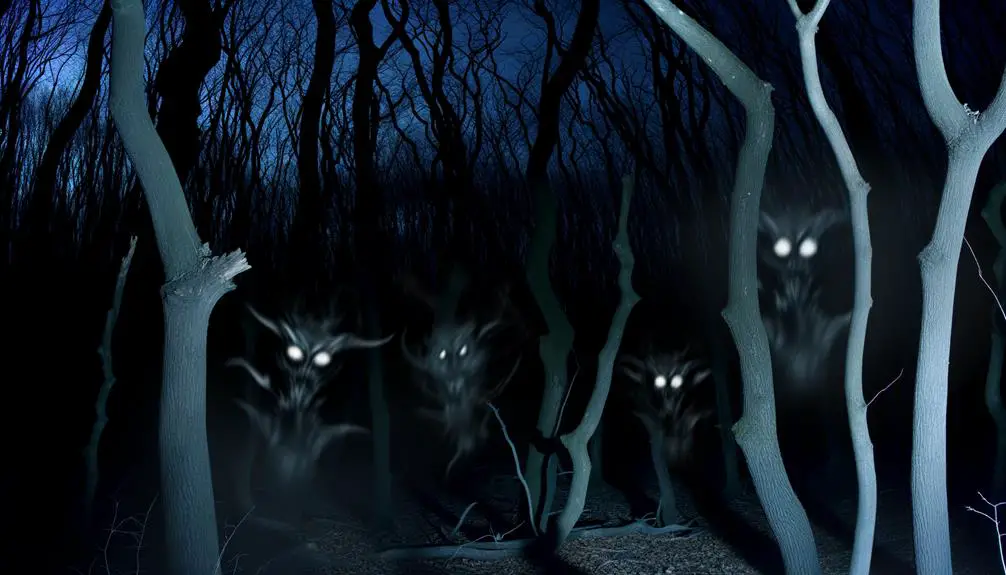
Demonic Spirits in the Bible
In the Bible, you'll encounter demonic spirits primarily regarded as fallen angels, who rebel against God. Scriptures such as Isaiah 14 and Ezekiel 28 provide foundational texts for this belief, which is also upheld by early Christian and Jewish traditions. These entities appear in various roles – tempters luring individuals to sin, possessors controlling their hosts, deceivers spreading falsehoods, and tormentors causing pain. Remarkable instances include Jesus exorcising demons and Saul's torment by an evil spirit. Their influence ranges from emotional manipulation to physical disturbance. Exploring their symbolic significance and varied manifestations might offer deeper insights into their pervasive impact across different cultures.
Key Takeaways
- Demonic spirits in the Bible are often depicted as fallen angels who rebelled against God.
- Jesus exercised authority over these spirits, performing numerous exorcisms.
- Biblical texts like Isaiah 14 and Ezekiel 28 provide foundational insights into the nature of demonic spirits.
- The symptoms and influence of demonic possession include emotional, psychological, and physical disturbances.
- Deliverance and exorcism rituals in biblical tradition involve prayer, fasting, and invoking spiritual authority.
Origins of Demonic Spirits
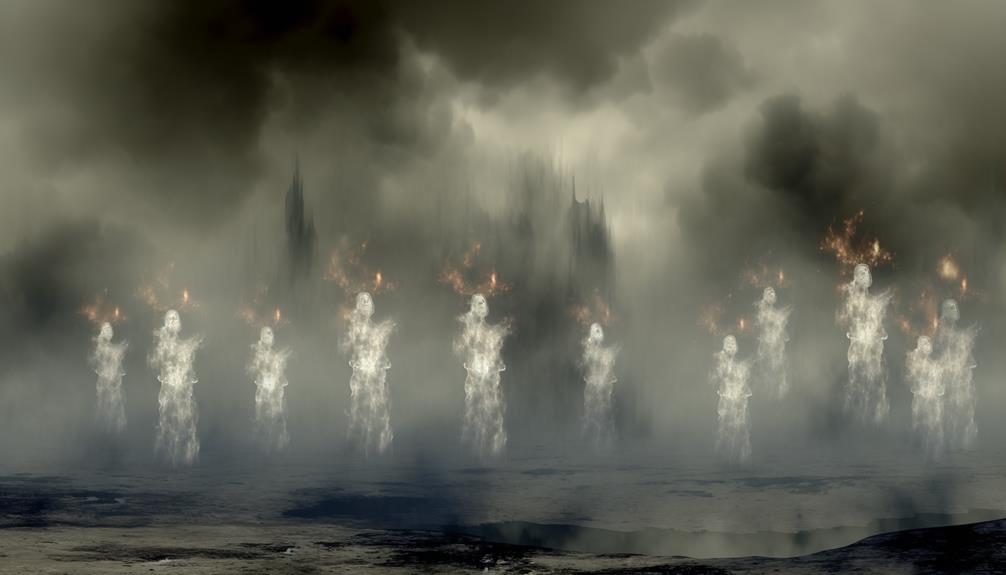
While the Bible doesn't explicitly detail the origins of demonic spirits, it's suggested that they are fallen angels, once part of God's celestial order. These entities became demons as a result of their spiritual rebellion against God. This concept is rooted in interpretations of key scriptural passages that hint at a cosmic upheaval among the angelic ranks.
The notion of fallen angels is primarily deduced from texts like Isaiah 14:12-15 and Ezekiel 28:12-17, though these passages are often debated among scholars regarding their reference to human kings or celestial beings. Additionally, the Book of Revelation (12:7-9) describes a war in heaven in which Satan, an archangel, rebels and is cast out along with his followers. This narrative supports the theory of a spiritual rebellion leading to the creation of demonic entities.
You'll find that early Christian doctrine and Jewish traditions also support this theory, emphasizing a fall from grace due to disobedience or pride. These traditions have shaped much of the Christian understanding of demons, portraying them as antagonists within a spiritual domain, continually at odds with the divine order and humanity. This scholarly perspective helps to contextualize the complex nature of demonic spirits within biblical theology.
Types and Categories
The Bible categorizes demonic spirits into various types, each possessing distinct characteristics and roles in the supernatural domain. Understanding this demonic hierarchy and spirit classifications is essential for a deeper comprehension of the spiritual battles depicted in the scriptures.
Type |
Function |
Example in Scripture |
|---|---|---|
Tempters |
Entice humans to sin |
Serpent in Genesis |
Possessors |
Take control of individuals |
Legion in Mark 5:1-20 |
Deceivers |
Spread lies and false doctrines |
Deceiving spirit in 1 Kings 22:22 |
Tormentors |
Inflict physical or mental pain |
Spirit causing muteness in Matthew 9:32-33 |
Each type plays a specific role within the demonic hierarchy, often reflecting their nature and the extent of their influence over humans. Tempters subtly coax individuals towards disobedience, exploit human desires, and are frequently depicted interacting directly with humans. Possessors, on the other hand, exhibit a more aggressive form of influence by overtaking an individual's will, often leading to dramatic biblical accounts of exorcism.
Deceivers and tormentors fulfill roles that disrupt and distort divine truth and human well-being, highlighting their pivotal part in the broader spiritual warfare. This structured approach to demonic activity helps you to appreciate the complexities within the spiritual narratives in the Bible.
Notable Biblical Encounters
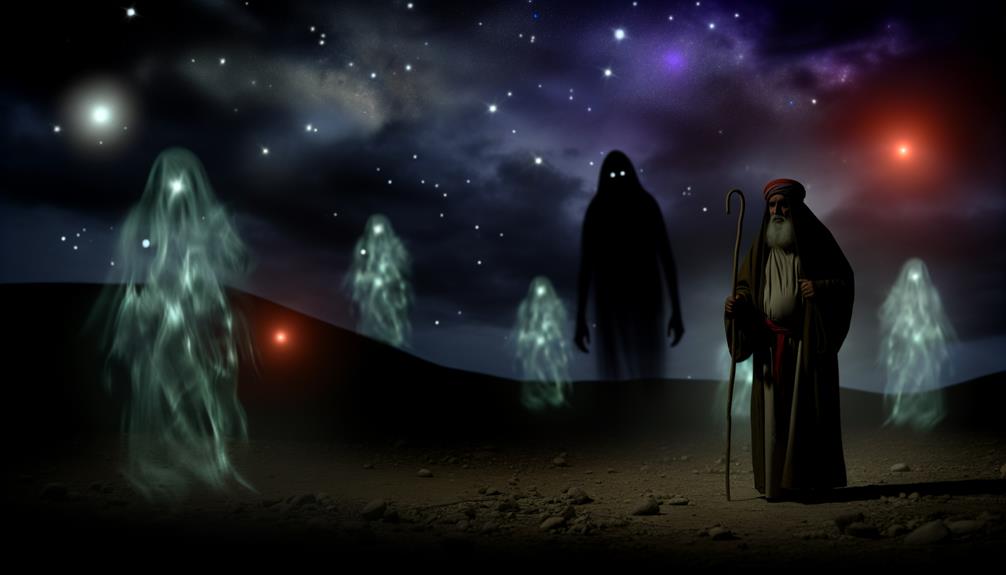
As you explore the notable biblical encounters with demonic spirits, consider the narratives of Jesus exorcising demons and the spirit that tormented Saul. These accounts not only reflect the cultural and theological contexts of their times but also provide insights into the perceived power and influence of such spirits. Analyzing these stories, you'll uncover the broader implications of demonic interactions in biblical texts and their impact on contemporary interpretations.
Jesus Exorcises Demons
In numerous accounts throughout the New Scriptures, Jesus is depicted exorcising demons, demonstrating His authority over evil spirits. This divine authority isn't just a display of spiritual power but also serves as a proof to the geographic implications of His ministry. Jesus' encounters with demons often took place in varied locations, from the synagogue in Capernaum to the region of the Gerasenes. These events not only underscore the widespread acknowledgment of His power across different territories but also illustrate the pervasive nature of demonic influence in those times. As you examine these instances, you'll notice that each encounter emphasizes a restoration of order and faith, highlighting the profound impact of Jesus' authority on both individuals and communities.
Saul's Tormenting Spirit
Shifting focus to the Old Covenant, Saul's torment by a malevolent spirit illustrates another profound biblical encounter with the demonic. This instance, recorded in 1 Samuel 16, underscores a critical theological point: God's allowance of such spirits as a consequence of disobedience. You'll see that Saul's disobedience, marked by impatience and unfaithfulness, precipitated his spiritual and mental anguish, allowing a harmful spirit to trouble him.
To understand this further, let's look at a detailed breakdown:
Aspect |
Detail |
|---|---|
Source |
1 Samuel 16:14-23 |
Cause |
Saul's disobedience to God's commands |
Consequence |
Torment by an evil spirit |
Resolution |
Relief through David's harp playing |
Theological Implication |
Divine punishment and mercy coexist |
Analyzing this encounter, it's evident that divine justice is intricately linked to human actions, as shown by Saul's experience.
Methods of Influence
Demonic spirits wield their influence through various methods, often manipulating human emotions and thoughts to achieve their ends. You'll find that in the context of spiritual warfare, these entities engage in a battle for control over the spiritual state and ultimately the behavior of individuals. The symptoms of possession, for instance, can range from subtle psychological changes to overt disruptions in physical and emotional well-being. These symptoms might include sudden aggressive behavior, profound shifts in personality, or unexplained physical ailments.
These spirits also exploit vulnerabilities related to personal or cultural beliefs, intensifying fears, doubts, and despair. For example, they might amplify feelings of unworthiness or guilt to destabilize one's spiritual foundation. This tactic not only sows chaos in the lives of the afflicted but also in their communities, disrupting relationships and communal harmony.
Furthermore, demonic entities can manipulate environmental factors or situations to increase stress or fear, thereby making an individual more susceptible to their influence. It's important to recognize that their ultimate aim is to sever the bonds between individuals and their spiritual or religious anchors, pushing them towards isolation where their influence can become more profound and unchallenged. Through these multifaceted strategies, demonic spirits seek to extend their reach and control.
Exorcisms and Deliverance
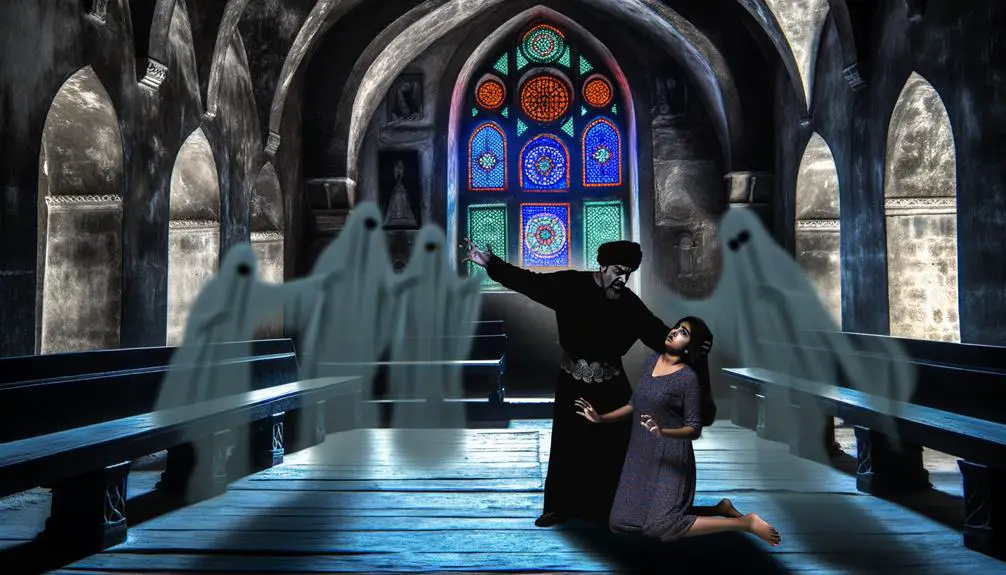
Given the profound influence demonic spirits can exert, exorcisms and deliverance rituals serve as important responses to counteract their effects. These practices are deeply rooted in the biblical tradition, reflecting a complex interplay of spiritual authority and ritual preparation. When you're delving into these topics, it's vital to understand the structured approaches that underpin these rituals.
- Spiritual Authority: Central to exorcism is the concept of spiritual authority. This power is often vested in religious figures who are believed to have the divine right to command evil spirits.
- Ritual Preparation: Preparation involves prayer, fasting, and the sanctification of the space. This stage is crucial to ensure the safety and spiritual readiness of both the exorcist and the afflicted.
- Use of Sacred Texts: Scriptures play a pivotal role, often recited to assert spiritual dominance over the demonic entities.
- Symbols of Power: Objects considered holy—such as crosses, holy water, and anointed oils—are typically used to reinforce the exorcist's authority.
- Community Support: Exorcisms often require the presence or support of a community, which strengthens the ritual's efficacy and provides moral support to the afflicted.
Understanding these components helps you appreciate the depth and seriousness with which such practices are approached in religious contexts.
Symbolism and Interpretation
In the biblical context, symbols often serve as powerful conduits for deeper spiritual meanings, shaping how demonic spirits are understood and interpreted. These symbols aren't just characters or events; they're layered with allegorical meanings that reflect the spiritual struggles and theological implications embedded within the texts. For instance, when you read about the serpent in the Garden of Eden, it's not merely a snake; it represents evil and temptation, marking the introduction of sin and the complexity of human moral choices.
The depiction of demonic spirits through symbols like unclean animals or chaotic waters in the Bible serves as a mirror to the spiritual impurities and disorder that deviate from divine harmony. This symbolic framework isn't just for ancient audiences; it's a method that bridges the gap between the literal and the spiritual, urging you to explore further into the text. By understanding these allegorical meanings, you gain insights into the theological implications of good versus evil, purity versus defilement, and order versus chaos.
Thus, the way demonic spirits are portrayed symbolically in the Bible isn't merely for narrative effect. It's a deliberate theological exploration that invites you to reflect on the broader cosmic battle between divine forces and demonic powers.
Modern Perspectives and Impact

As you explore how demonic spirits are depicted in modern contexts, it's essential to examine their cultural interpretations today. These entities have not only persisted in religious texts but have also greatly influenced contemporary media. Analyzing this impact offers insights into the evolving nature of evil as represented in various forms of entertainment and public discourse.
Cultural Interpretations Today
Today's cultural interpretations of demonic spirits reflect a complex blend of ancient religious beliefs and modern psychological understandings. You'll find that these interpretations are deeply influenced by global folklore and notions of spiritual warfare, yet they are increasingly viewed through the lens of psychological symbolism and individual inner conflicts.
- Historical Context: Ancient texts and archaeological findings provide early evidence of demonic beliefs.
- Global Folklore: Each culture has distinct demonic figures, influencing local spiritual practices.
- Spiritual Warfare: Many modern religious groups still engage in practices aimed at combating demonic influences.
- Psychological Interpretation: Analysts often interpret demons as manifestations of personal or collective unconscious issues.
- Societal Impact: These beliefs shape laws, social norms, and ethical debates within various communities.
Influence on Media
Demonic spirits have profoundly influenced modern media, shaping narratives across film, literature, and digital platforms. In horror films, you'll notice a recurring theme of demonic possession and spiritual warfare, drawing directly from biblical accounts. These films often explore the psychological and moral complexities of confronting evil, resonating deeply with audiences seeking more than just superficial thrills.
Similarly, Gothic literature has integrated these entities to symbolize inner turmoil or societal decay, using settings like haunted mansions or desolate landscapes to mirror the characters' struggles. As you explore these genres, you'll find that the portrayal of demonic spirits serves not only as a plot device but also as a catalyst for exploring deeper existential questions, reflecting widespread cultural and spiritual anxieties.
Frequently Asked Questions
How Do Demonic Spirits Differ From Fallen Angels?
You might wonder how demonic spirits differ from fallen angels. They're part of a spiritual hierarchy, originating from an angelic rebellion, each with distinct roles and characteristics within their supernatural framework.
Can Demonic Spirits Possess Animals?
When analyzing animal behavior, it's vital to take into account all factors. Biblical accounts suggest that animals can exhibit unusual behaviors potentially indicative of possession, though concrete evidence remains elusive in scholarly circles.
Are Demonic Spirits Mentioned in All Religious Texts?
No, demonic spirits aren't universally mentioned in all religious texts. Textual analysis shows variations; some traditions extensively discuss them, while others may not reference such entities at all, focusing instead on different spiritual concepts.
What Role Do Demonic Spirits Play in the Apocalypse?
In apocalyptic narratives, demonic spirits often engage in end-time battles, representing forces in spiritual warfare. They symbolize deep moral and existential conflicts you'd analyze, impacting humanity's ultimate fate in scholarly interpretations.
How Do Cultural Beliefs Influence Perceptions of Demonic Spirits?
Your cultural interpretations shape how you view demonic spirits, influencing the evolution of these perceptions over time. These beliefs reflect broader societal values and fears, altering collective understanding and responses to such entities.

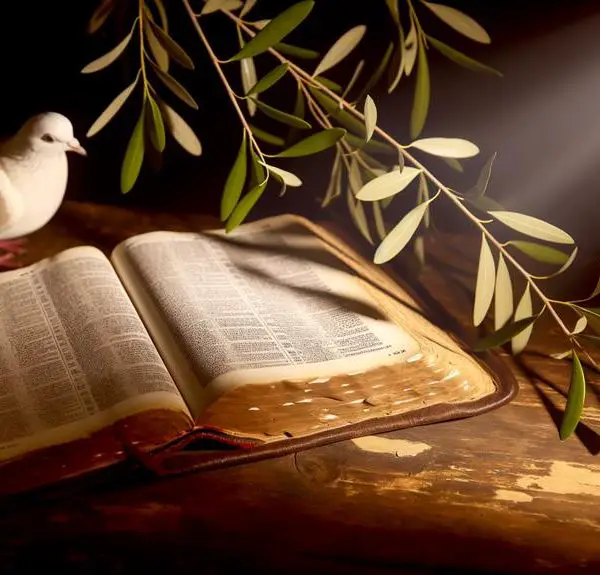

Sign up